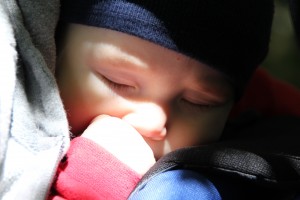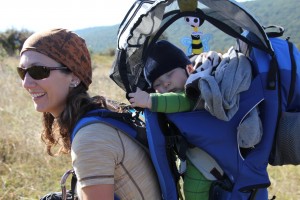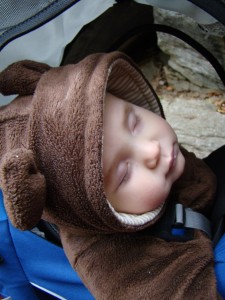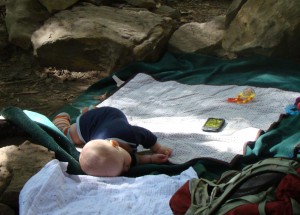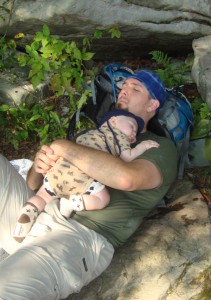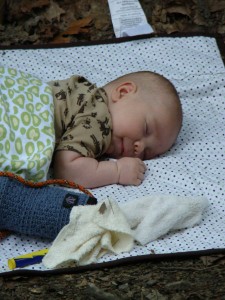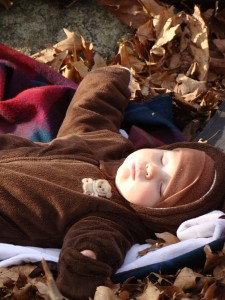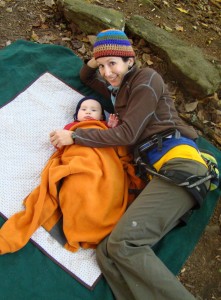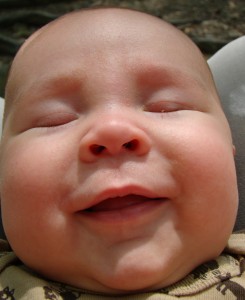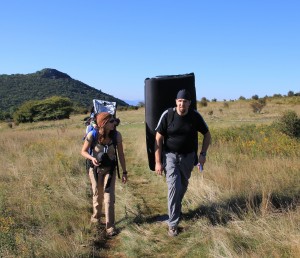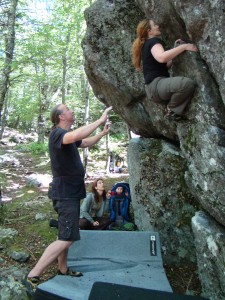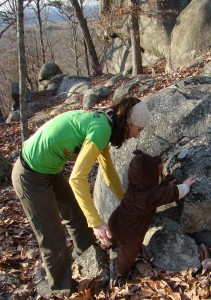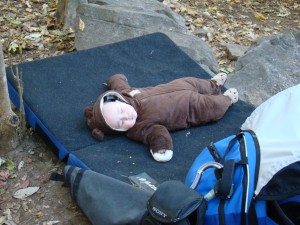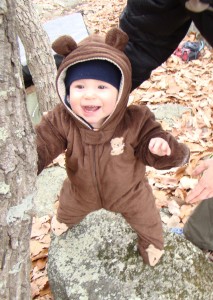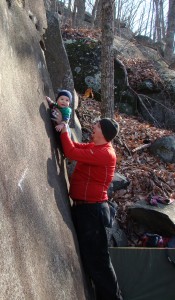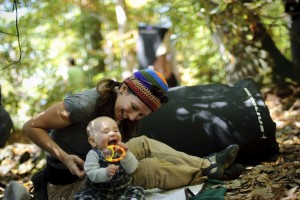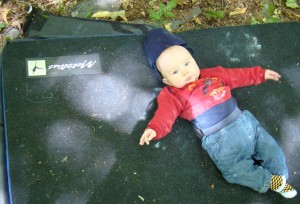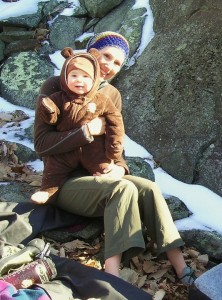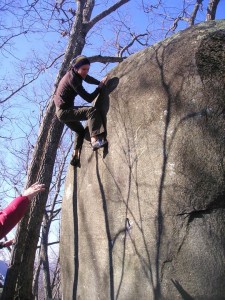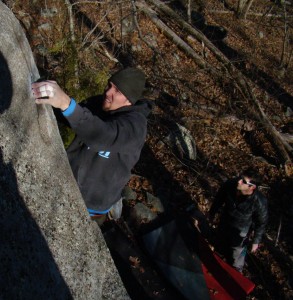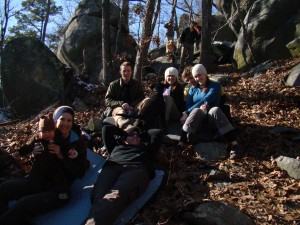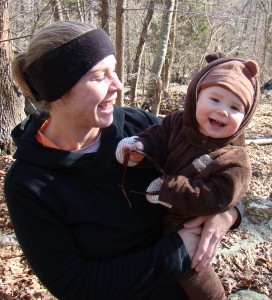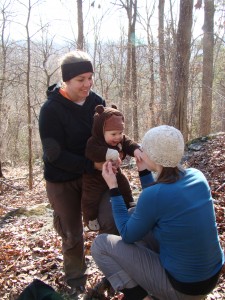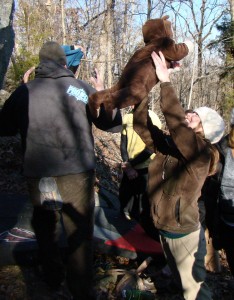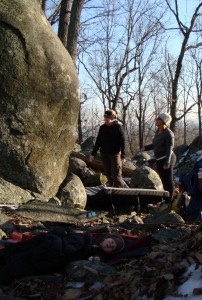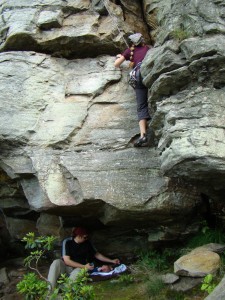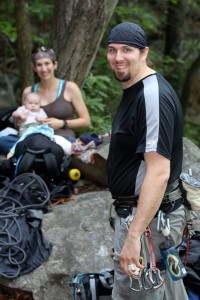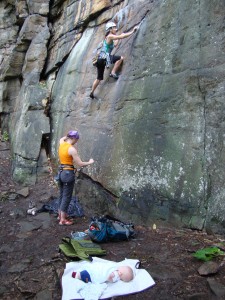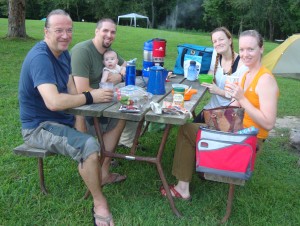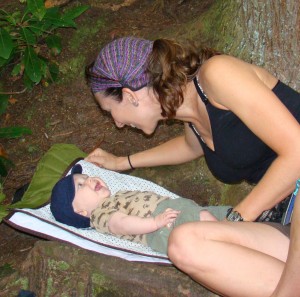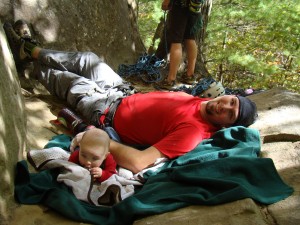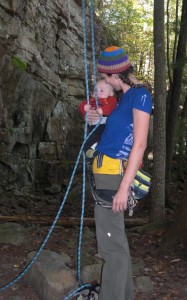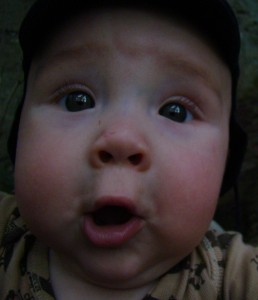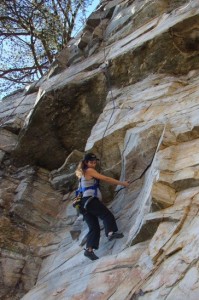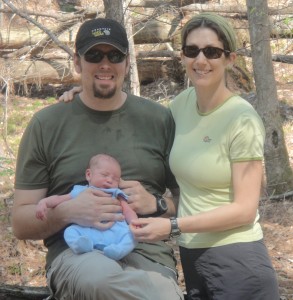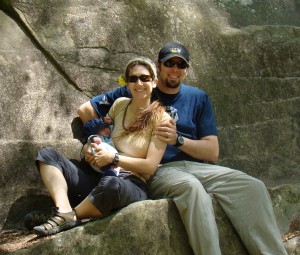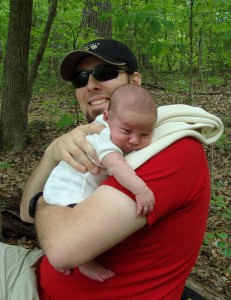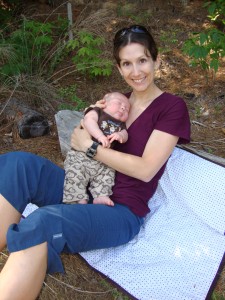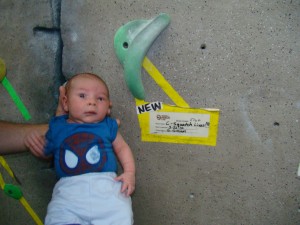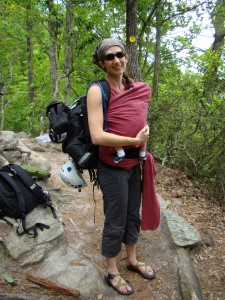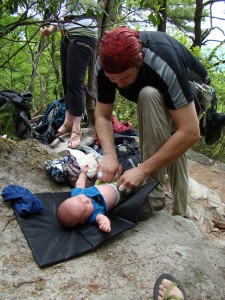Creating a Cragbaby – Sleepytime Solutions
Taking your baby to the crag for any length of time means that there will be naps involved – for your baby most definitely, and for you…quite possibly after a long day of climbing and hanging out with your little one! Everyone knows how cranky an overtired baby can be (and how annoying that can be to everyone within earshot…) so before you go off gallavanting around in the mountains, make sure you have a strategy for helping your baby to catch some Zzzz’s. We found through trial (and error…) several tips for making on-the-go naps in strange places easier on C. The following is a practical guide for what worked for us – but remember that sleep habits during the early months are influenced a great deal by temperament and personality of each individual baby, so try our ideas but toss ’em and go back to the drawing board if they don’t work…
Take advantage of natural sleep inducers.
- Car Rides – For day trips with a decent drive, try to time your car time with when you know your little one will be tired. With any luck, your cragbaby will arrive at the crag well-rested and ready for new discoveries – plus mom and dad have time to scour the guidebook and plan out the day!
- Nursing – There is a lot of “mainstream” information out there nowadays that cautions moms to NEVER nurse a baby to sleep because it creates bad habits – babies should be taught to be dependent, self-soothers, etc. Our family sides with the camp that knows that all of those things will happen soon enough, when a child is developmentally ready, but this post is about getting your baby to sleep at the crag, not to debate infant sleep habits in general. We believe that God designed breastfeeding to be a wonderful cure-all for baby’s needs. As far as sleep goes, breastmilk contains many sleep-inducing properties, not to mention that the act of suckling naturally soothes and calms babies – it was designed to put your baby to sleep, so why not use it to your advantage! If your out at the crag and baby is too excited to calm down enough to sleep, take him or her to a quiet place away from all the action, and offer to nurse. Have your sleeping spot picked out, and your blanket down and ready so that all you’ll have to do is place your little snoozer down.
- Music – C knows that when he hears anything off of Renee and Jeremy’s album, “It’s a Big World,” it can only mean one thing – sleepytime is coming! He hears it when he’s getting dressed for bed, when he’s being rocked to sleep, during his last nursing session in the evening, when he’s fussy but fading fast in the car…and also when its time for a nap in the woods at the base of a cliff! The album is downloaded onto my iPhone so that we have it in a pinch for whenever we need a sleep cue, STAT! Obviously, it doesn’t have to be this particular album, (although many of our climbing partners can attest to its peaceful, eyelid-drooping properties!). It doesn’t even have to be music (book, blankie, toy, etc)- the point is, find a strong sleep association that can be portable and easily accessible when you’re out at the crag.
- Movement – Its no secret that smooth, rhythmic motion can lull a baby to sleep (and for that matter, adults – hammock, anyone?) Our family is big into babywearing, and in C’s earliest months, he spent many a naptime nestled up snug and tight against Mommy or Daddy’s chest. Now that he’s older and taking longer naps, he usually sleeps in his crib during the day, but we still capitalize on the movement principle a good bit on crag days. Just like you can plan car rides to coincide with naptimes, you can do the same with approaches or hikes from one area of the crag to another. Depending on your carrier, you might even be able to transfer your sleeping babe back to the ground when you get to your destination.
Expect a different routine. Especially in the beginning, a trip to the crag is going to be a completely different day than your baby has ever experienced. Don’t expect everything to fall into place perfectly the first time out. Eventually, you’ll start to develop a “crag routine,” but it may or may not be the same routine that you have at home. For instance, at home C always has two naps, each 1.5-2 hours, whereas at the crag he usually has 3 naps, all around an hour or so. It works for him, so it works for us.
Know when to call it a day. A full day of climbing, plus driving to and from the crag, makes for a long day for cragbabies. Be considerate of your little people needs – finish up well before your little one gets overtired and cranky so you can end on a good note. Our end of day schedule usually works something like this – We hike out sometime between 5 and 6, and grab dinner pretty soon after we get on the road. By the time we finish dinner, its approaching C’s bedtime. We go ahead and put him in his jammies and “super-dipe” him (we use cloth, so our night diaper is bulked out to the max!). C usually falls asleep pretty soon after we get back on the road, and then when we get home we can usually transfer him to his crib with only some minor resettling, if any, rather than having him wake all the way up to get ready for bed at home.
Don’t forget that sleep is an issue that can be quite fickle at times for babies. Remember the saying, “The only constant is change?” It’s not unusual for patterns of sleep to change dramatically by the week, or even by the day. There are all sorts of outside factors that can influence sleep behavior – developmental milestones, teething, growth spurts, illness, separation anxiety, etc. What worked last week at the crag might seem like a horrible idea this week. The best thing you can do is to have a host of sleep-inducing ammunition lined up in your arsenal, understanding climbing partners, and a long-term perspective that all too soon you’re gonna miss these days!

